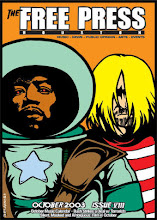DVD slight return
Paramount Pictures releases classics from their archives under the banner Centennial Collection. The transfers are beautiful to look at and although each set comes with two discs most of the abundant extras are nominal. Regardless if you consider yourself a movie maven these are films you should have on list of movies to see at least once.
The story of two divorced men who despite being total opposites become roommates The Odd Couple remains Neil Simon's best play. TOC starts out dark with Felix about to kill himself. The direction of Gene Saks is pedestrian but the self loathing of Simon's play comes through albeit theatrically. The television show jettisoned the shadow areas although it kept the Neal Hefti movie theme. Both Jack Lemmon and Walter Matthau have died but the extras include commentary from their respective sons Chris and Charlie. Their thoughts and memories are inviting especially to fans of those actors.
Even though it's 56 years old (That's nothing, Guiness is 250 years old.) Roman Holiday was shot using the box aspect ratio. Made during the transition from square movies to long rectangular movies RH has to be the single best film to launch a star. Even next to on-location Rome scenery Audrey Hepburn steals the show with a performance that won an Oscar for lead actress in her first film. Gregory Peck is a cad although he has the film's best character arc since he realizes what a dick he's been and tries to change. Verily, the 1950s was the last decade when being an actual princess was relevant to the way people lived and Hepburn makes her idyllic Princess and the Pauper routine work even when the film insists on make believe situations. Extras include a lengthy docu of films Hepburn made at Paramount.
Speaking of princesses, Grace Kelly became the princess of Monaco but only after meeting her future husband while shooting To Catch A Thief. The color photography won an Oscar but that wasn't hard with Vistavision and the French Riviera, fireworks and twisty mountain roads. The young femme and older man (Cary Grant) romance actually works here in a manner that doesn't jive with similar relations in contemporary films. "The cat has a new kitten," Kelly warns Grant referring to his character's pasttime as a high wire jewel thief. One extra that was particularly insightful takes viewers to locations in France where select scenes were lensed.










